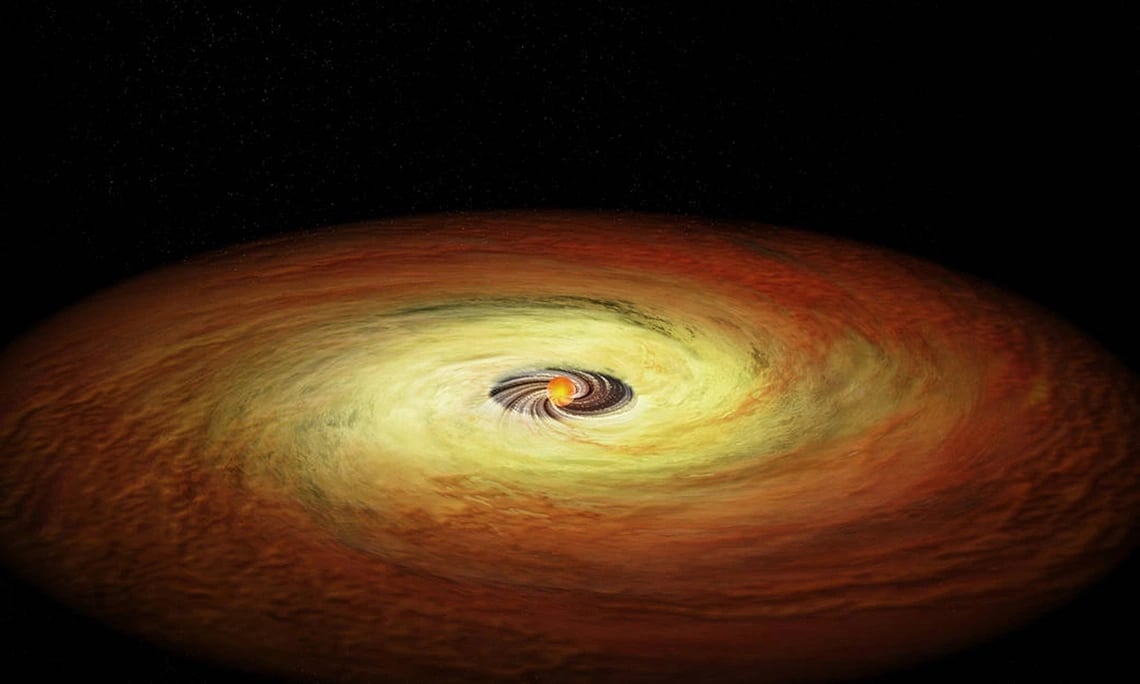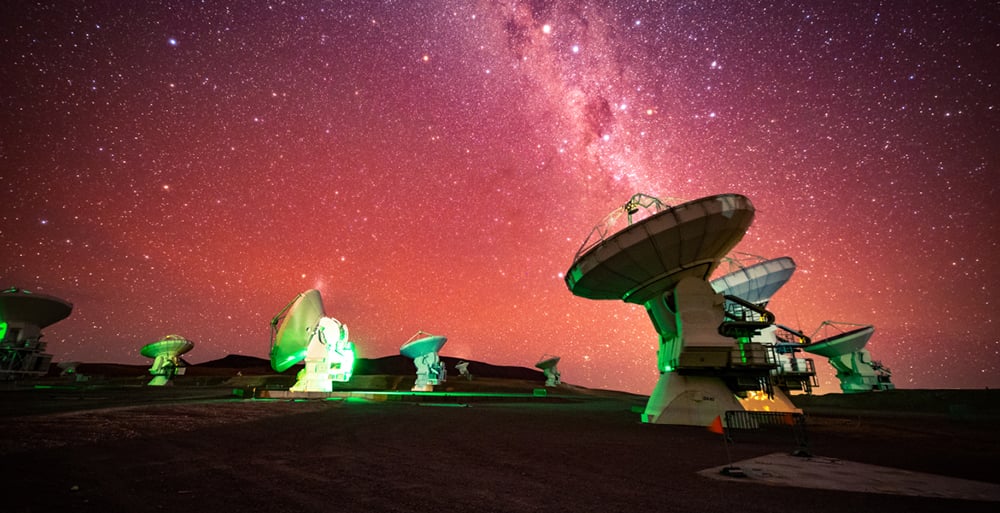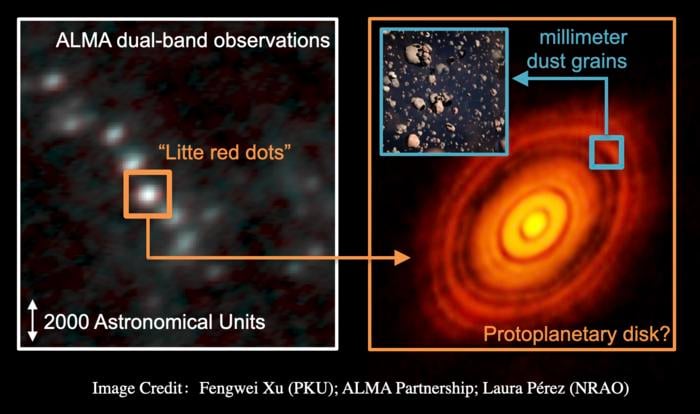Protoplanetary disks are cosmic nurseries where new planets are born out of swirling rings of gas and dust that encircle young stars. These dynamic structures, typically spanning hundreds of astronomical units, represent the earliest stage in planetary system formation. Within these disks, tiny dust particles collide and stick together, gradually building into pebbles, then boulders, and eventually planetary embryos through a process called core accretion. As these embryonic planets grow, they carve gaps and spiral patterns in the disk, leaving behind signatures that astronomers can detect with powerful telescopes like ALMA (Atacama Large Millimeter Array) and the James Webb Space Telescope.
 Artist impression of a protoplanetary disk
Artist impression of a protoplanetary disk
An international team of astronomers from from the Peking University, the Shanghai Astronomical Observatory, and the University of Cologne have now discovered protoplanetary disks in the extreme environment of our galaxy's Central Molecular Zone (CMZ), challenging previous theories that were based mainly on observations in our part of the Galaxy. The team conducted the most detailed survey yet of three molecular clouds near the Milky Way's galactic center, identifying over 500 dense cores where stars are forming under remarkably different conditions than those found locally. Published in Astronomy & Astrophysics, the study suggests that planet formation processes may vary significantly across different galactic environments.
 Radio telescopes from the ALMA array against the Milky Way. Data from ALMA was used for this study
Radio telescopes from the ALMA array against the Milky Way. Data from ALMA was used for this study
Detecting systems in the Central Molecular Zone (CMZ) is difficult due to their distance, low brightness and heavy dust obscuration. To tackle this, the team used the ALMA telescope in Chile, which combines signals from widely spaced antennas for high-resolution imaging. This enabled them to observe structures as small as 1,000 astronomical units, even from 17 billion AU away. Using a technique called dual-band imaging—capturing two wavelengths at the same resolution—they gained valuable data on temperature, dust, and structure. Surprisingly, over 70% of dense cores appeared redder than expected, leading to the hypothesis that protoplanetary disks may be common in these regions.
"We were astonished to see these 'little red dots' cross the whole molecular clouds, they are telling us the hidden nature of dense star-forming cores" - Fengwei Xu from the University of Cologne's Institute of Astrophysics
The team propose two main explanations for the unexpected reddening of dense cores in the CMZ: either the cores contain smaller, optically thick structures, likely protoplanetary disks that absorb shorter wavelengths, or they harbor unusually large dust grains formed in disks and expelled by protostellar outflows. Both scenarios suggest that protoplanetary disks are widespread in these regions, challenging earlier assumptions about dense core structure. The findings point to over 300 potential disk forming systems in just three CMZ clouds, offering a rare opportunity to study planet formation in the extreme environment of the centre of the Galaxy.
These groundbreaking observations open a new window into how planetary systems may form under radically different conditions than those near our Sun. The presence of protoplanetary disks in the turbulent, high-pressure environment of the Galactic Centre suggests that the building blocks of planets can emerge even in the most extreme corners of the Milky Way. As future telescopes and deeper surveys extend our reach, the team hope to uncover whether these early disks can indeed evolve into full planetary systems—and how such processes might differ across the galaxy. This study marks a major step toward understanding the diversity of planet formation across the Universe.
Source :A multitude of protoplanetary discs detected in the galactic centre
 Universe Today
Universe Today
